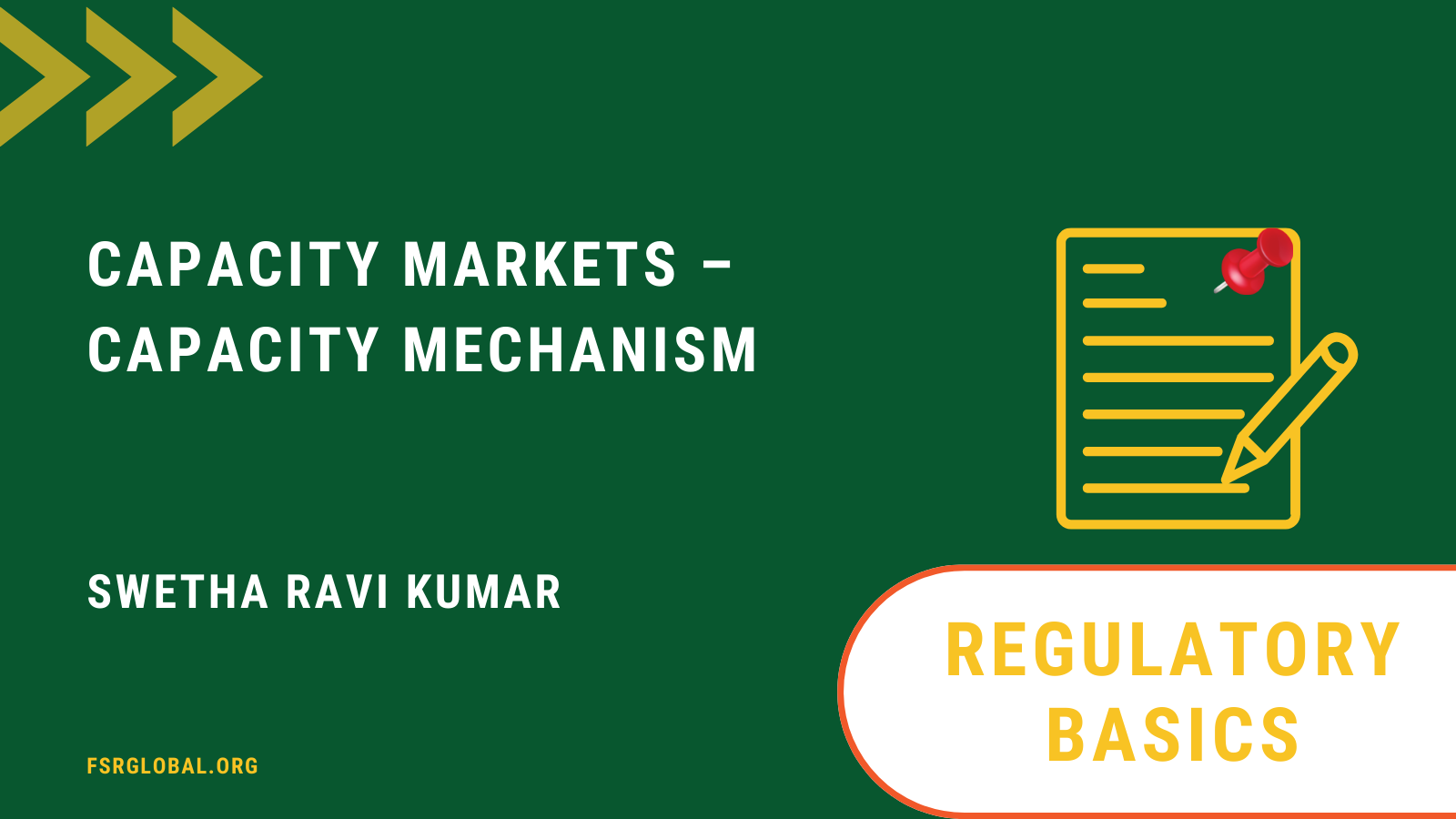capacity markets – capacity mechanism

What is capacity market or capacity mechanism?
In an electricity system, capacity means there are adequate resources on the grid to ensure that the demand for electricity can be met at all times. A capacity market is designed to ensure sufficient reliable capacity is available by providing payments to encourage investment in new capacity or for existing capacity to remain open. If the wholesale and balancing markets do not result in adequate investment in generation capacity, demand-side flexibility or energy storage assets, then corrections are needed, and these corrections are called capacity mechanisms.
Why capacity markets?
In a competitive wholesale market, the investment decisions are driven by the price signals from an energy-only market. However, this alone is not sufficient to attract investments in generation capacity to ensure reliable and adequate supply of power.
From a security of supply point of view, the decision that needs to be made is to either allow the market to do its thing or intervene with the necessary regulatory mechanism to ensure adequate power supply.
In an ideal scenario, the market should solve the problem, but given the recent power prices crisis in Europe, there is lesser faith in the short-term markets to deliver a solution via energy-only markets and many countries are looking towards capacity markets to bring in the necessary generation capacity to ensure security of supply at all times, including peak demand.
Why capacity markets now?
As renewable energy penetration increases in the system, it will become more and more difficult for certain generation technologies to become economically viable and thereby retain generation investment interest. This stems from how power producers derive their revenues. In order to build generation capacity, a power producer makes an investment, and the fixed cost of any such investment is termed as capacity charge, which is determined on an annual or monthly basis. In addition, the power producer incurs incremental or marginal cost which includes the fuel cost, when the energy is produced by the generating asset. Now the recovery of these costs (fixed and incremental) by the power producer is done through either over-the-counter contract, bilateral contracts or through the wholesale spot markets in an energy-only market. These contracts pay out based on the amount of energy sold and cover for capacity/fixed cost only implicitly. In a RE rich scenario or low demand situation, power producers will get fully compensated for the energy charges (based on energy delivered) and under compensated for capacity charges. This will deter new investments, however generation capacity besides renewables will be needed to ensure adequacy and supply of firm power.
What are capacity mechanisms?
Development of a capacity market can ensure resources being adequately available, either in the short term, medium term or long term. Different power markets around the world have different capacity mechanisms (market-wide, targeted or price based) to ensure security of supply and they include, capacity obligation (market-wide) – a decentralized approach to ensure capacity is contracted by the distribution companies based on their own evaluation of demand; capacity auction (market-wide) – centralized approach where capacity is calculated years ahead and auctioned by an independent entity as forward auctions; strategic reserve (targeted) – a contingency measure usually used by the system operator, where a certain portion of capacity is set aside and is called upon in case of exceptional circumstances to ensure system security and capacity payments (price-based) – a fixed price determined by an independent entity is paid to the generator or consumer for available capacity.
In general terms, capacity markets can be considered as ‘generation resource adequacy’ needed to ensure supply meets demand at any given point of time. It is a market created in addition to existing electricity markets, where in only capacity is remunerated and traded. Power producers are thus provided with additional incentives, as the price signals alone from the spot market don’t suffice. The additional cost for maintaining the capacity is incurred as capacity surcharge and are passed onto the electricity consumer. While capacity markets pose as a possible need as we transition to a cleaner energy mix, it also comes with some challenges such as; it does not distinguish between generation technologies; how can system operators plan for the right kind of demand response at the right time and location and can some technology lobby groups use capacity markets as low-risk subsidy for existing generation. A prerequisite for capacity markets would be the need for a well-functioning wholesale market as well are medium-term forward markets.
India as of today is an energy-only market, but with resource adequacy planning being brought in by the Ministry of Power and the Central Electricity Authority, how India can transition to an energy + capacity market needs to be examined particularly as India’s aims to increase its RE share year over year.
Reference
Pradyumna C. Bhagwat, Kaveri K. Iychettira, Jörn C. Richstein, Emile J.L. Chappin, Laurens J. De Vries, The effectiveness of capacity markets in the presence of a high portfolio share of renewable energy sources, Utilities Policy, Volume 48, 2017, Pages 76-91, ISSN 0957-1787, https://doi.org/10.1016/j.jup.2017.09.003
L. Hancher et.al, “Capacity Mechanisms In The Eu Energy Markets : Law, Policy, And Economics”, 2022
GIZ, “Report on market design for capacity markets in India”, 2019
